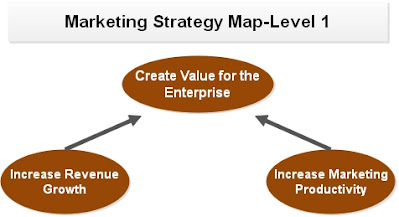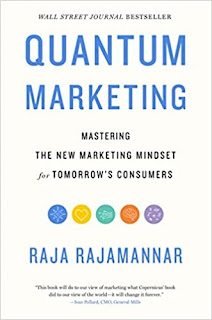 |
| Image Source: Shutterstock |
Key Takeaways
Marketing leaders are facing constant demands to improve marketing performance and prove the business value of marketing activities. To meet these demands, marketing leaders need an effective marketing measurement system, but measuring marketing performance has been a perplexing challenge for decades, and it remains a significant issue today.
In this article, we'll explain -
- Why the key to building a robust marketing measurement system is to tie the system to your marketing strategy
- How to use a marketing strategy map to describe your strategy in measurable terms and link your marketing activities to business value
Marketing Measurement is Still a Challenge
The persistent and growing demands for greater accountability from marketing has resulted in a huge volume of literature describing how to measure marketing performance. Marketing industry pundits have addressed the topic from almost every conceivable angle in dozens of ebooks, white papers, articles and presentations.
Despite all this attention, recent research indicates that many marketers aren't satisfied with their marketing performance measurement system. In the
2021 Marketing Measurement & Attribution Survey by
Demand Gen Report, 58% of B2B marketing executives said their company's ability to measure and analyze marketing performance is
poor/inadequate or
needs improvement.
Marketers attribute their dissatisfaction to a variety of specific factors, including data and technology issues. But it's increasingly apparent that many marketers need to take a fresh look at how they're approaching the task of measuring marketing's performance and value.
The Key to Meaningful Marketing Measurement
The key to building an effective marketing measurement system is to tie the system directly to the company's marketing strategy. In other words, the measurement system should be designed to measure how well the marketing strategy is working. That's because the performance of marketing and its ability to add value to the business are largely dependent on the quality and execution of the marketing strategy.
Deriving marketing metrics from marketing strategy is also the right approach because a company's marketing strategy is ultimately defined by what marketing activities it chooses to perform, how it chooses to perform those activities, and how those activities relate to and reinforce one another. Therefore, marketing activities are the building blocks of marketing strategy, and marketing strategy is the essential connective tissue that links marketing activities to business value.
This approach has several implications for marketing leaders. Most importantly, it means they will need to describe their marketing strategy in measurable terms before they select specific marketing metrics.
The Architecture of a Marketing Strategy Map
The best tool for describing a company's marketing strategy in measurable terms is a marketing strategy map. A strategy map is simply a diagram that depicts the marketing objectives and activities that constitute the major elements of a company's marketing strategy.
These objectives and activities are arranged in a hierarchy of linked cause-and-effect relationships. A marketing strategy map makes these relationships and dependencies visible, and therefore it will enable marketing leaders to measure how well their strategy is working.
In this post, I'll describe the basic architecture of a marketing strategy map. Every company's strategy map will be unique because every company's marketing strategy is unique. In this discussion, I'll cover components that appear in most marketing strategy maps, and I'll use others for illustrative purposes.
To keep the length of this post manageable, my discussion will focus on a vertical "slice" of a complete marketing strategy map. This will allow me to describe the full "depth" of a strategy map and demonstrate how it enables marketing leaders to connect marketing activities to strategic business outcomes.
The most effective way to build a marketing strategy map is to use a top-down approach. In virtually all companies, the ultimate goal of marketing is to create value for the enterprise, so that objective is placed at the top of the strategy map, as shown in the following diagram.
Marketing can create value for the enterprise in two basic ways - by driving revenue growth and by increasing the productivity of the marketing function. A sound marketing strategy will seek to create value in both ways. Therefore, most marketing strategy maps will include both a revenue growth objective and a marketing productivity objective, as the diagram shows.
A marketing strategy map also makes the "logic" of the strategy clear. In the above diagram, the directional arrows indicate that the hypothesis of the strategy is that marketing will create value for the enterprise if it drives revenue growth and improves marketing productivity.
Most marketers will use return on marketing investment to measure marketing's contribution to the value of the enterprise. Revenue growth is often measured using the year-over-year percentage growth rate. Marketing productivity can be measured in several ways, but one of the better metrics is the revenue turnover ratio. This ratio is calculated by dividing total annual revenue by total annual marketing costs.
The balance of this post will focus on the revenue growth side of a marketing strategy map, part of which is depicted in the following diagram.
Virtually all companies have access to four structural sources of organic revenue growth.
- Continuing sales to existing customers (customer retention)
- Increased sales to existing customers
- Sales to new customers in existing markets
- Sales to new customers in new markets
The marketing strategies of most companies will include objectives for most, if not all, of these sources of revenue growth, as the above diagram illustrates.
Marketers can use a variety of metrics to measure their success at achieving these revenue growth objectives. For example:
- For continuing sales to existing customers - annual customer churn rate
- For increased sales to existing customers - share of wallet (in the relevant category)
- For sales to new customers in existing markets -
- Number of new customers acquired in existing markets
- Revenue from new customers acquired in existing markets
- For sales to new customers in new markets -
- Number of new customers acquired in new markets
- Revenue from new customers acquired in new markets
Once again, a marketing strategy map uses directional arrows to make the logic of the marketing strategy clear. If marketing successfully drives revenue from a combination of these growth sources, it will achieve its overall revenue growth objective.
It's important to make three points concerning the four revenue growth objectives shown above. First, some marketing leaders will use more specific versions of these growth objectives if their marketing strategy is more targeted. For example, if company leaders believe that acquiring new customers in certain industry sectors is an attractive growth opportunity, marketing leaders may use objectives and metrics that are specific to those industry sectors.
Second, marketing leaders will place different priorities on these four growth objectives based on the market and competitive conditions their company is facing. And third, some marketing leaders may not use all four growth objectives. For example, some companies may have no current plans to enter a new market.
The marketing objectives I've discussed so far would be appropriate for most companies. The remaining objectives will be more company specific because they are dependent on what a company sells, the attributes of the buying process used by the company's prospects and customers, and the specific marketing tactics the company plans to use.
The following diagram shows an illustrative set of marketing objectives that relate specifically to one of the growth objectives previously discussed - acquiring new customers in existing markets.
The marketing strategy depicted in this diagram is focused on three objectives - increasing brand awareness, increasing the level of buyer engagement, and increasing the number of qualified sales opportunities. The logic of this strategy can be described as follows:
- Increasing brand awareness will result in an increased level of buyer engagement with the company.
- Increasing buyer engagement will increase the number of qualified sales opportunities available to the company.
- Increasing the number of sales opportunities will increase the number of new customers the company acquires and increase revenue from new customers
The final component of a marketing strategy map is a description of the types of activities marketing leaders will implement to achieve the identified objectives. Each marketing activity is linked to the objective or objectives marketing leaders believe the activity will impact.
For this discussion, I'm using one marketing activity - blogging - to illustrate how to address marketing activities in a strategy map. In the above diagram, blogging is designed to increase brand awareness and to increase buyer engagement. The logic of marketing leaders would be: If we increase the quantity and quality of the content published at our blog, we will increase the awareness of our company and/or brand by potential buyers, and we will also increase engagement by potential buyers.
Marketers can use several metrics to measure brand awareness and buyer engagement. Some examples are:
- For brand awareness -
- Share of search
- Brand health surveys
- For buyer engagement -
- Number of website visitors
- Number of content views/downloads
- Time spent with website content
Marketers also have several options for measuring the specific performance of their blog. These could include number of pageviews and shares of blog content on social media.
Of course, marketing leaders will implement other types of marketing programs to drive increased brand awareness and increased buyer engagement. A complete marketing strategy map will include all of the types of marketing activities that are part of the marketing strategy, and those activities will be linked to one or more marketing objectives.
The Most Important Benefit of a Marketing Strategy Map
A marketing strategy map provides several benefits, but the greatest benefit is that it helps marketing leaders solve one of the most difficult challenges associated with marketing performance measurement.
Marketing creates business value through activities that operate at different stages of the value creation process. The problem is, many marketing activities contribute to business value only indirectly, and some will be several steps removed from the economic outcomes they affect. Under these circumstances, it's difficult for marketing leaders to show the financial value of such "remote" marketing activities.
When marketing leaders build a strategy map, they create a chain of linked marketing activities and objectives that makes it possible to connect marketing programs to top-level business outcomes in measurable ways.
The following diagram illustrates how a marketing strategy map can be used to prove the value of a "remote" marketing activity, in this case blogging.
It would be very difficult to prove that blogging has an impact on enterprise value because the direct relationship (the correlation) between blogging activity and changes in business value is weak. The diagram uses a thin dotted line to depict this weak relationship.
However, the marketing strategy described in this post is based on the hypothesis that publishing a high-quality blog will increase brand awareness and buyer engagement. The relationships between blogging activity and both increased brand awareness and increased buyer engagement are direct and can be measured. So, if the hypothesis of the strategy is valid, improving the quality of blog content will result in greater brand awareness and buyer engagement.
The marketing strategy depicted in the diagram is also based on the hypothesis that increasing brand awareness and buyer engagement will result in more sales opportunities, which will result in more sales to new customers, which will lead to overall revenue growth. And revenue growth will create value for the enterprise.
The relationships among the adjacent marketing objectives shown in the above diagram can all be measured quantitatively, which enables the hypothesis of the strategy to be tested and validated.
The bottom line is, the chain of linked marketing activities and objectives in a marketing strategy map enables marketing leaders to test the effectiveness of their marketing strategy and to demonstrate the indirect impact of marketing activities on business outcomes and value.














